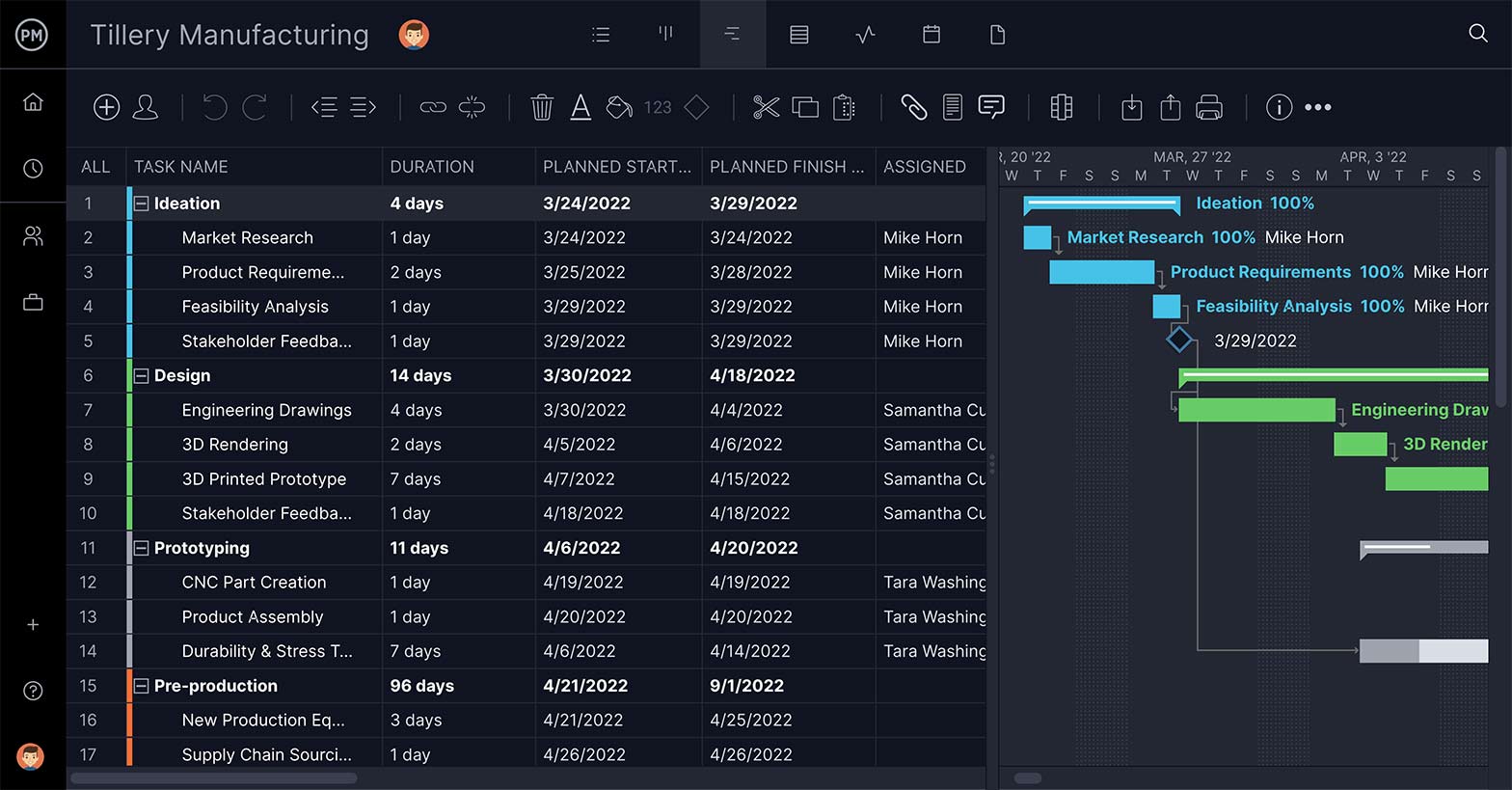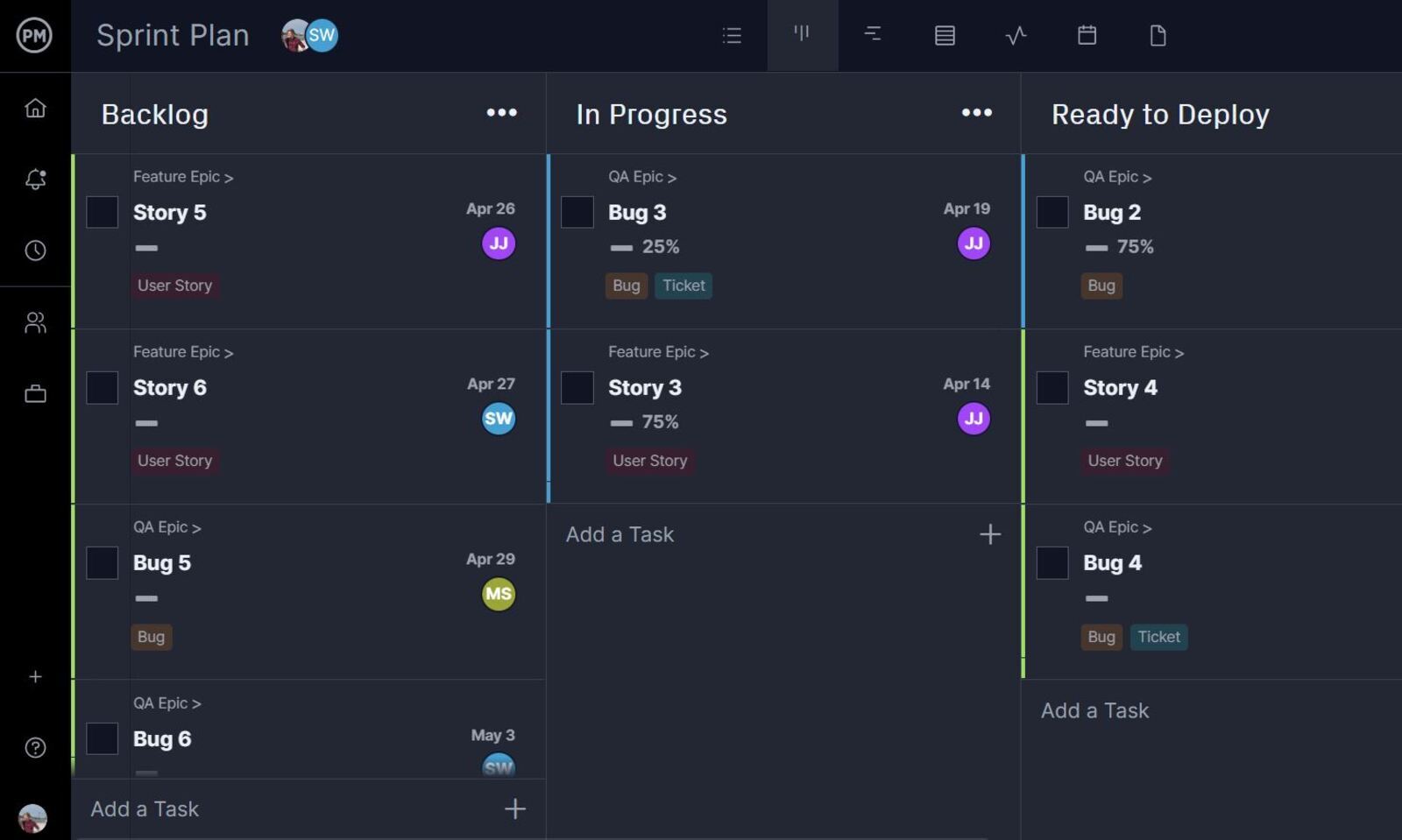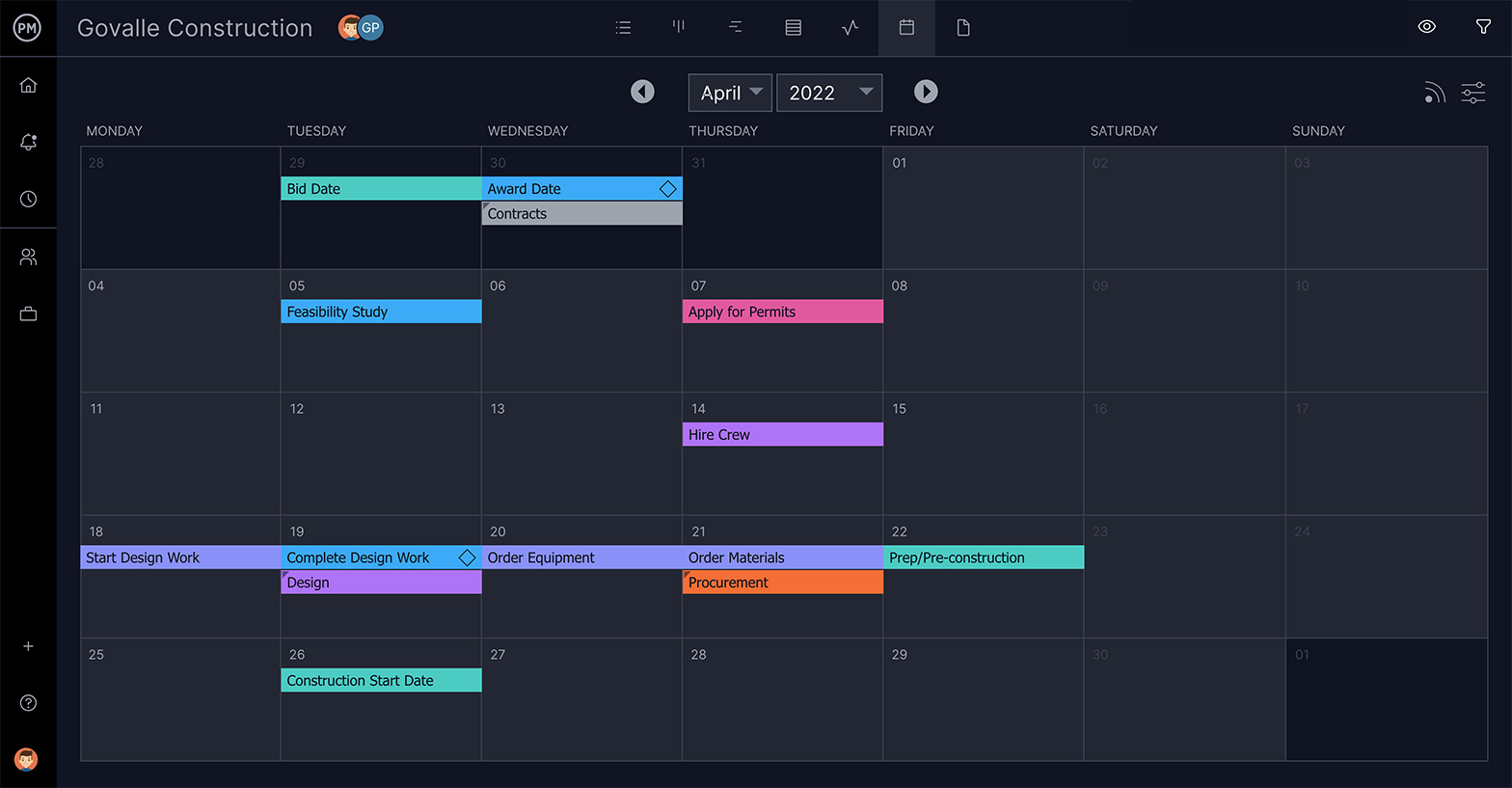What Is Product Management?
Put simply, product management is an ongoing process to streamline the planning, production, marketing and other tasks related to the product life cycle. It involves the coordination of cross-functional teams, data, processes, business systems and more.
In reality, product management can be a complicated matter. Without a methodology and proper tools to manage the many elements that must be tracked throughout the product life cycle, the risk of failure is greatly increased.
With ProjectManager’s online Gantt charts, you can create a product roadmap that lets you assign tasks, set due dates, priority levels and collaborate with your team in real time. Then use our kanban boards to manage your product backlog and prioritize your user stories. Get started for free.

To better understand how product management works, let’s take a look at the key concepts of this discipline.
Key Elements of Product Management
Any product manager must know how to create a product vision, a product strategy and a product roadmap. That’s because understanding these elements is essential for overseeing the product management process. Once you master them, you’ll be able to plan, execute and keep track of your product life cycle with ease.
Product Vision
The product vision is a statement that describes what your product hopes to achieve in the long term. This statement is written from a high-level perspective and is the foundation for your product management strategy and your product roadmap.
The vision is usually determined by the CEO with help of the chief product officer and other C-level executives. The vision isn’t a fantasy, but an idea that can become a reality with clear, actionable steps that the product team executes, led by the product manager. In addition, the product vision should have room to change according to customer feedback.
Product Management Strategy
The product management strategy is the action plan that explains how a product vision will be accomplished. In other words, a product strategy describes how a product will be developed, marketed and distributed.
The product strategy is set up by product managers. Your product strategy should always be aligned with your company’s business model and strategic goals. In addition, any product management strategy should weigh these four aspects:
- Customers: A strong understanding of your target customers is key to a successful product management strategy. Your product team must understand their pain points, preferred features and purchasing behavior. Market research is an ongoing effort as customers and markets change, so allow for wiggle room to adjust the product strategy with customer feedback.
- Competitors: Next, understand the competition. Determine how your strategy will differentiate you from those offering similar products in the market. Build a value proposition that makes your product stand out. This means studying the competition and analyzing the market to reveal opportunities for your brand.
- Profitability: Once you’ve decided how to meet the needs of your customers and differentiate your product from competitors, you’ll need to ask yourself, how will the product be profitable for the company? If your product isn’t addressing this concern, it isn’t going to be a success. Describe how the product you’re planning to develop will align with your company’s business goals.
- Macro environment: Finally, don’t forget to consider the macro environment. The macro-environment accounts for economic, technological, political and cultural forces that are at play and can impact the market and your product’s entry into it, over the short- and long-term. Think about emerging markets, new technologies and economic trends that are impacting your customers.
Product Roadmap
A product roadmap is a visual tool that allows product managers to map out the product development process in a timeline. Product roadmaps also include key task management information, such as due dates, a description of the user stories and priority levels.
The product roadmap covers the work items that are required to implement the product strategy, which is the action plan to achieve your product vision.
Related: Free Action Plan Template for Excel
Product Management Process
As stated above, product management is an ongoing process that starts with a product idea and finishes once the product has completed its life cycle and is removed from the market. Here’s a quick overview of the product management process.
1. Market Research
Market research allows companies to identify target customers, market niches and business opportunities for new product development. By conducting market research efforts you’ll get customer insights that are useful for product management. Effective market research results in new products with a value proposition that resonates with your target customers.
2. Idea Management
Ideas about new products or new product features can come from a variety of sources such as market research, customer feedback or from internal teams. It’s important that product managers evaluate these ideas thoroughly to decide which of them will make it into the company’s product roadmap. It’s important to make a proof of concept to verify whether a product idea is feasible or not and gauge its potential benefits.
3. Product Specifications
Once you’ve gone through the idea management phase and you decide to create a product, it’s time to think about its features. The specifications of your product must align with your target customers’ needs, stakeholder requirements, functional requirements and business goals. You can create a product requirements document to gather all this information.
4. Product Roadmapping
Once you have an idea of what your product should look like, it’s time to determine what needs to be done to get there. The first step in product road mapping is to identify which are all the features and specifications of your product. These are known as user stories because product teams evaluate them from an end-user perspective. Once you gather all your user stories it’s time to create your product roadmap that will serve as a product development timeline and a single source of truth for cross-functional teams.
5. Prioritization
In any product development process, there are many user stories and ideas that come up from different sources. Prioritizing which of those gets done is a very important part of the product management process, as teams should work on the most important product features first.
6. Testing & Delivery
Once your product team has delivered a product, it’s time for comprehensive testing for quality assurance and marketing management purposes. During this phase, the product manager works closely with cross-functional teams to make sure that the product is ready to be launched.
7. Customer Feedback
Once you’ve launched your product to the market, you need to gather customer feedback to measure your product performance. Customer feedback is the cornerstone for creating new products and improving your product portfolio.
The Product Manager Role
The product manager is the team leader who drives the team to a successful product end. To do this requires a strategy, and the product manager is the one who develops this line of attack known as a product roadmap.
Core Product Manager Responsibilities
A product manager, depending on where they’re employed, can have additional functions similar to a product marketing manager, where they perform all outbound marketing activities related to the product release.
They can also be like a project manager who makes product plans and deals with the schedule and resources or a program manager with cross-functional execution. Here are some typical responsibilities of a product manager.
- Building a product strategy that aligns with the product vision defined by leadership teams
- Leading the product development team
- Creating a product roadmap
- Creating a release plan
- Collaborating with multiple departments to plan and execute a product launch
- Gathering and analyzing customer feedback for product improvement
A Cross-Functional Role
A product manager is a cross-functional leader; they’re the hub of a network of departments within the organization. These departments can include engineering, sales, marketing and other support teams. Because of these various lines of communication, it’s critical that a product manager is fluent in dealing with a variety of different personalities and protocols. It is through the product roadmap that everyone is on the same page throughout the production.
Free Product Management Templates
ProjectManager is a great product management software tool, but if you’re not ready to upgrade, we have free downloadable product management templates. Here are a few that can help you manage your product.
Product Launch Template
Managing the product launch is how you get your product to market on time, within your budget and meeting your customers’ expectations. Our free product launch template for Excel helps you track workflows, is fully customizable and will guide your product to maximize your return on investment (ROI).
Product Development Template
Managing your concept through the process of building and releasing it is a journey that requires organization. Our free product development template for Excel helps you organize your tasks and builds a roadmap to take the concept through to reality. Manage your workflows and resources to deliver a successful product.
Product Roadmap Template
Just as you need a roadmap to get from point A to point B, our free product roadmap template for Excel is a tool to take your product from concept to release. It will help you make strategic decisions, allow you to prioritize what’s most important and share that information with the entire product team.
ProjectManager & Product Management
ProjectManager is online product management software that does what templates can’t do. Our software doesn’t require you to manually update and we connect you to your team with real-time data to help you make more insightful decisions.
Use Gantt Charts to Create Product Roadmaps
A product roadmap guides you through every stage of the product management process. You can create a visual timeline of product tasks, milestones and more with our interactive Gantt charts. Link dependent tasks to avoid bottlenecks, add milestones to track progress and filter for the critical path to know which tasks are crucial and which are not. Then set a baseline to track your progress in real time against your product plan.

Manage Your Product Backlog with Kanban Boards
Your product team isn’t going to use the Gantt, but everything that you outline on the Gantt chart product roadmap transfers automatically to our other product views. If your team is working in an agile environment, they can use kanban boards to manage their backlog and collaboratively plan sprints. Product managers get transparency into their process and can reallocate resources as needed to avoid blocking the team.

Use Calendars to Plan Your Product Launch
Another view that can prove helpful is the calendar. It shows deadlines and duration on a calendar grid, which can be used to plan the product but also is great for stakeholders. They want to be updated on progress but they don’t need to know the details that the product team requires to do their job. The calendar view gives them a high-level view of the product management process so product managers can manage their expectations.

ProjectManager also helps manage your stakeholder expectations with one-click reporting tools. You can customize all our reports to show only the high-level data that stakeholders want to see and then easily share the reports with them. Product managers can get reports on workload, costs and more, and it’s all in real time.
Related Content
- Product Management Software
- How to Create a Product Roadmap
- How to Plan a Successful Product Launch
- What Is a Product Breakdown Structure (PBS)?
- Product Manager vs Project Manager
- 7 Must-Haves for Every Product Manager Resume
Product management is a complicated discipline with many aspects, all of which must be planned for and tracked to make sure they’re progressing on time and within budget. That’s where ProjectManager comes in. Our product management software allows you to plan, monitor and report on the project in real-time. See how it can help you by taking a free 30-day trial.

